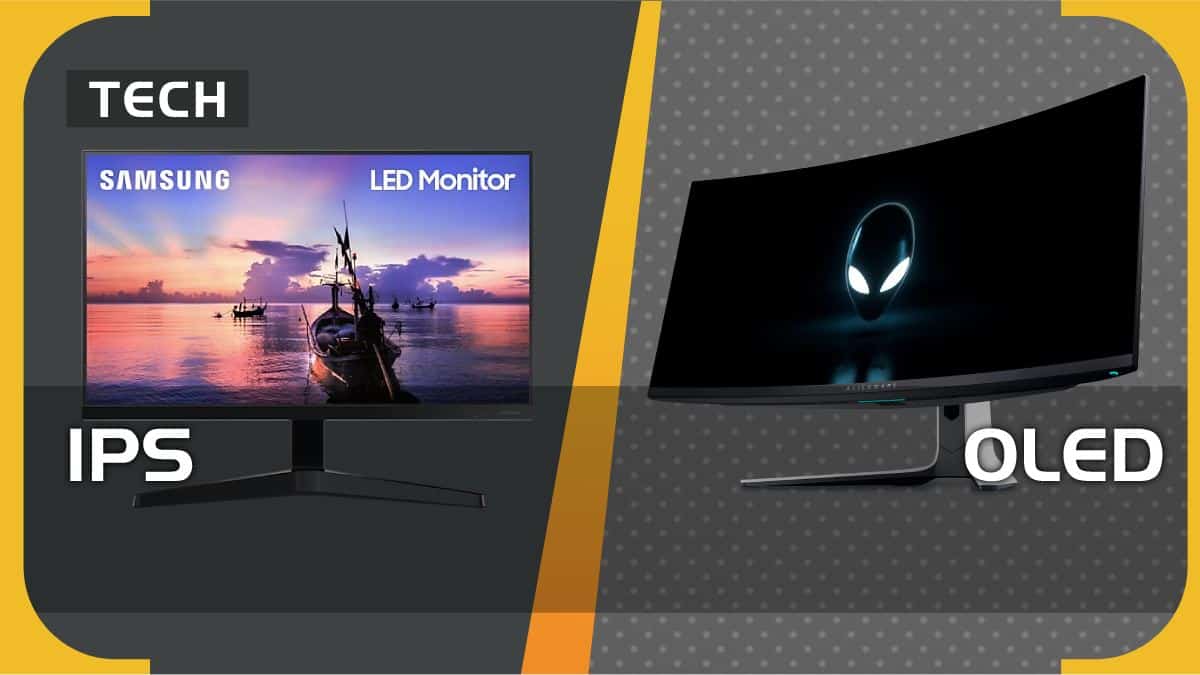Video Gamer is reader-supported. When you buy through links on our site, we may earn an affiliate commission. Prices subject to change. Learn more
If you’re wondering what’s the difference between IPS vs OLED displays, we’ve gone over everything you need to know here.
IPS (in-plane switching) is a display standard developed for LCD panels. IPS allows for better colors, wider viewing angles, and a much higher picture quality over its competition (TN, VA). IPS panels are highly recommended for gamers due to the wide angles and high refresh rates, though they are slightly more expensive.
OLED (organic light-emitting diodes) displays are a more modern standard, and while it is a much more popular technology in TVs, we’re now slowly beginning to see some great OLED gaming monitors. OLED displays are perfect for anyone seeking a visually engaging and immersive viewing experience due to the near infinite contrast ratio, deepest blacks, and ultra-fast refresh rates.
IPS and OLED are slightly difficult to wrap your head around, so we’re going to be comparing them so you can easily make a decision between the OLED and IPS monitors and TVs.
IPS vs OLED – price
IPS displays have been around since the late nineties, as has OLED technology. At the time of writing, IPS and OLED displays share the monitor market pretty evenly.
IPS displays offer a more budget friendly option for anyone not seeking out the most immersive gaming experience, whereas OLED displays are slightly more costly. IPS TVs aren’t hugely popular, so you’re much more likely to encounter an OLED TV. Again though, OLED TVs are much more costly than IPS TVs, the LG C2 being a notable example.
Read More: Is the LG C2 worth it?
Whether you’re looking out for a TV or monitor, an IPS panel will probably be much cheaper than OLED.
IPS panels might be better suited to lower budget monitors. especially as gamers wanting OLED monitors will be paying premium prices.
IPS vs OLED – picture quality
If we’re comparing picture quality between IPS and OLED – there’s not likely to be much of a competition.
IPS and OLED panels are inherently very different in their design. IPS pixels are uniformly lit by a backlight, whereas OLED pixels are independently lit. For OLED panels, this means that a pixel can be fully lit, and the pixel next to it can be turned off completely, meaning that there’s a near infinite contrast ratio. IPS panels on the other hand have a much more uniform lighting range, which isn’t as impressive or immersive.
Read More: Best TV for Modern Warfare 2 – our top picks
OLED is the much more adaptable technology and nowadays all of the best TVs for PS5 and Xbox Series X in particular have these panels. This is because it makes for a much more immersive gaming experience due to high dynamic range.
IPS vs OLED – response time
OLED panels once again trump this round. Response time on OLED panels is much lower than on IPS panels due to the pixels ability to change color and brightness independently.
Of course, since you’re paying much more for OLED displays, the rest of the surrounding technology is going to be premium too, so you’d expect extremely low response times from a display that’s definitely aimed at gamers.
To make use of the low response times, you will want to consider the best HDMI 2.1 monitors.
IPS vs OLED – conclusion
For anyone on a tighter budget, IPS panels are definitely the preferred option. Producing them isn’t anywhere near as high costing as an OLED display, though you ultimately are left with a less visually engaging picture quality and slower response times.
OLED panels on the other hand are extremely high quality, visually immersive and their price-tags are noticeable enough to reflect this. While you are getting an insane amount of quality, you’re also going to be paying extremely high prices. Whether it’s a TV or monitor, OLED panels are definitely the preferred option for gamers looking to enjoy the best possible experience.
Either way, both panels are better suited to specific things, so whatever you need from your monitor or TV, you should be covered. You might also be interested in reading about the best OLED gaming monitor or the best 65-inch 4K TVs.
